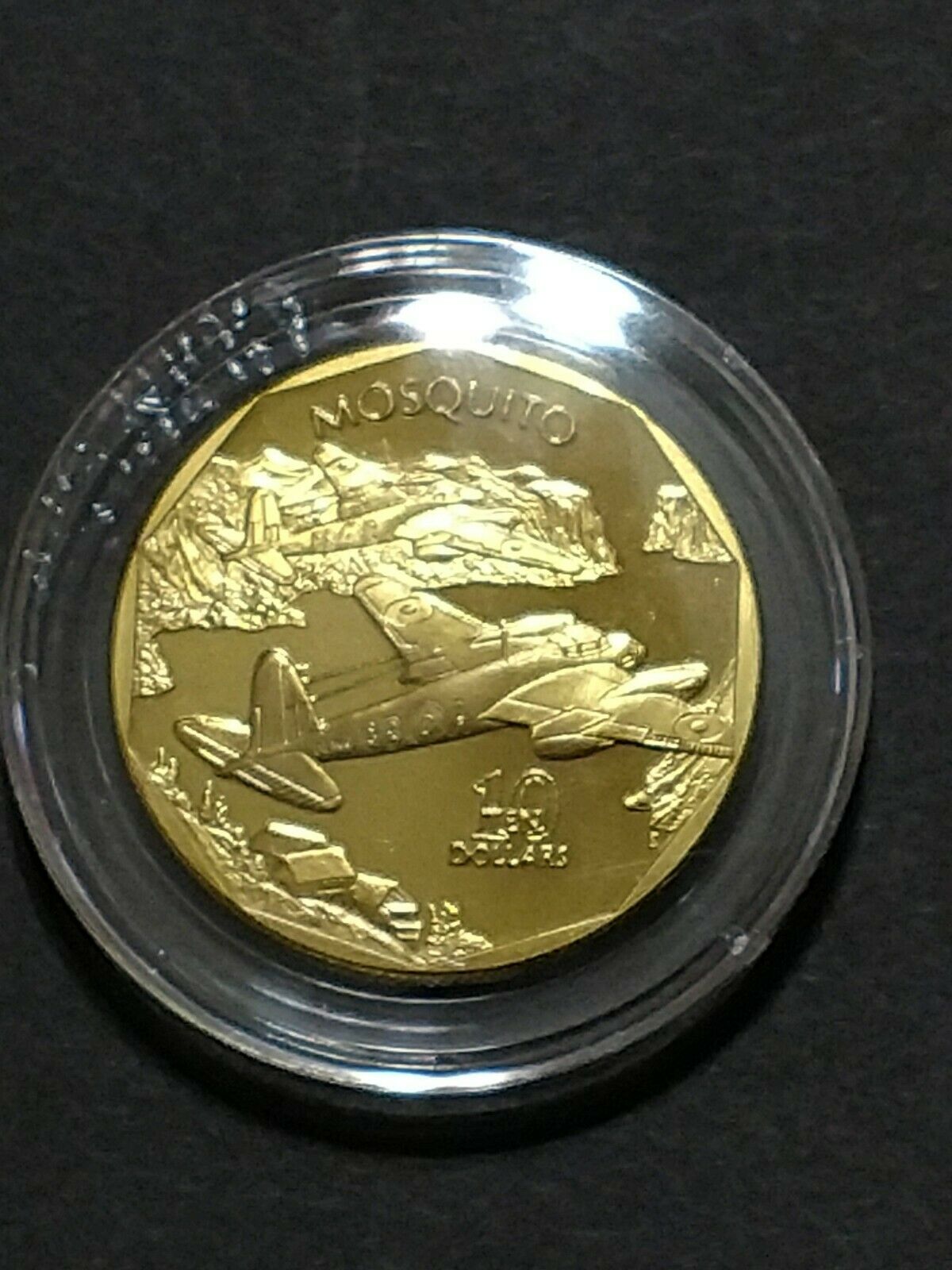-40%
1991 Marshall Islands Coin Legendary Aircraft WWII British Mosquito
$ 4.22
- Description
- Size Guide
Description
Solid Brass Commemorative Coin1991
Issued by the Republic of the Marshall Islands
Mosquito
The
de Havilland DH.98 Mosquito
is a British twin-engine
shoulder-winged
multi-role
combat aircraft
, introduced during the
Second World War
. Unusual in that its frame is constructed mostly of wood, it was nicknamed
The Wooden Wonder
,
[4]
or "Mossie".
[5]
Lord Beaverbrook
, Minister of Aircraft Production, nicknamed it "Freeman's Folly", alluding to Air Chief Marshal Sir
Wilfrid Freeman
, who defended
Geoffrey de Havilland
and his design concept against orders to scrap the project.
[6]
In 1941 it was one of the fastest operational aircraft in the world.
[7]
Originally conceived as an unarmed
fast bomber
, the Mosquito's use evolved during the war into many roles, including low- to medium-altitude daytime
tactical bomber
, high-altitude
night bomber
,
pathfinder
,
day
or
night fighter
,
fighter-bomber
,
intruder
,
maritime strike
, and
photo-reconnaissance
aircraft. It was also used by the
British Overseas Airways Corporation
(BOAC) as a fast transport to carry small, high-value cargoes to and from
neutral countries
through
enemy-controlled airspace
.
[8]
The crew of two, pilot and navigator, sat side by side. A single passenger could ride in the aircraft's bomb bay when necessary.
[9]
The Mosquito FBVI was often flown in special raids, such as
Operation Jericho
– an attack on Amiens Prison in early 1944, and precision attacks against military intelligence, security and police facilities (such as
Gestapo
headquarters). On 30 January 1943, the 10th anniversary of the
Nazis
' seizure of power, a morning Mosquito attack knocked out the main Berlin broadcasting station while
Hermann Göring
was speaking, putting his speech off the air.
The Mosquito flew with the
Royal Air Force
(RAF) and other air forces in the
European
,
Mediterranean
and
Italian
theatres. The Mosquito was also operated by the RAF in the
South East Asian theatre
and by the
Royal Australian Air Force
(RAAF) based in
the Halmaheras
and
Borneo
during the
Pacific War
. During the 1950s, the RAF replaced the Mosquito with the jet-powered
English Electric Canberra
.










